Integrating AI into a Scientific Analysis Platform to Accelerate Biotech Research Workflows
-
Product Type
B2B -
Domain
Scientific -
Timeline
6 months -
Role
Lead Product Designer
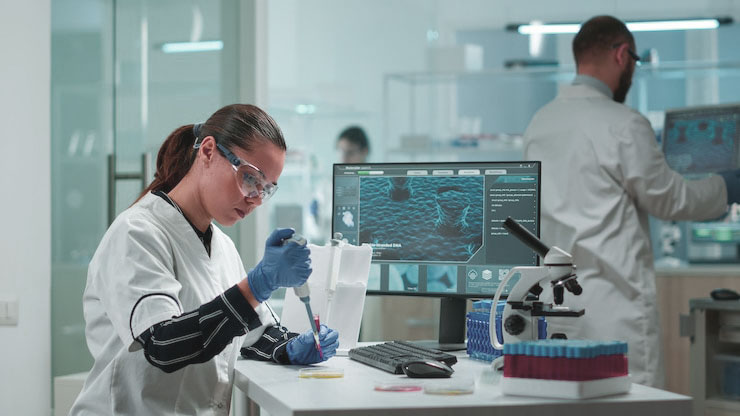

Overview
Genetic Research Platform used by laboratories to run, analyze, and report on genetic tests commissioned by clinics, hospitals, biotech companies, and research institutions.
Problem
"Our users are spending more time preparing data than analyzing it. The platform is powerful, but not intelligent."
- Onboarding time for a new lab: ~3 weeks
- Turnaround for test reports: avg. 7.5 days
- Churn (small-to-mid-size labs): 28% in 6 months
- Clinician satisfaction (report clarity): 5.8 / 10
- Internal hypothesis: We were not scaling with user complexity


Design Challenge
Key Design Objectives:
- Automate routine tasks (tagging, filtering, reporting)
- Support clinical users with non-technical backgrounds
- Reduce onboarding/setup time for labs
- Drive adoption of premium features like cohort analysis
Hypotheses


The AI-Driven Solution
We considered implementing an AI-assisted onboarding and workflow builder tailored for researchers.
The AI model:
- Analyzed the user's dataset type, past experiments, and research objective (collected at sign-up).
- Recommended pre-built pipelines (e.g., CRISPR variant detection, protein folding prediction).
- Used NLP to parse dataset names and suggest metadata normalization.
Offered in-product explanations with AI-generated descriptions of each workflow step.
AI Feature Definition and UX Role
We co-created a feature framework with PM and ML teams:
User Research
Interviewed 13 users (bioinformaticians, lab techs, clinicians)
Shadowed support team handling common issues
Heatmaps revealed high dwell time on workflow setup and metadata tagging forms
Reviewed failed onboarding sessions: 40% stalled on first dataset
Key Pain Points:
Manual metadata tagging = cognitive load + high error rates
“Guesswork” when selecting panels and workflows
Reports too technical for non-geneticist clinicians
No insights into trends or outliers in patient cohorts
Key Findings and Insights
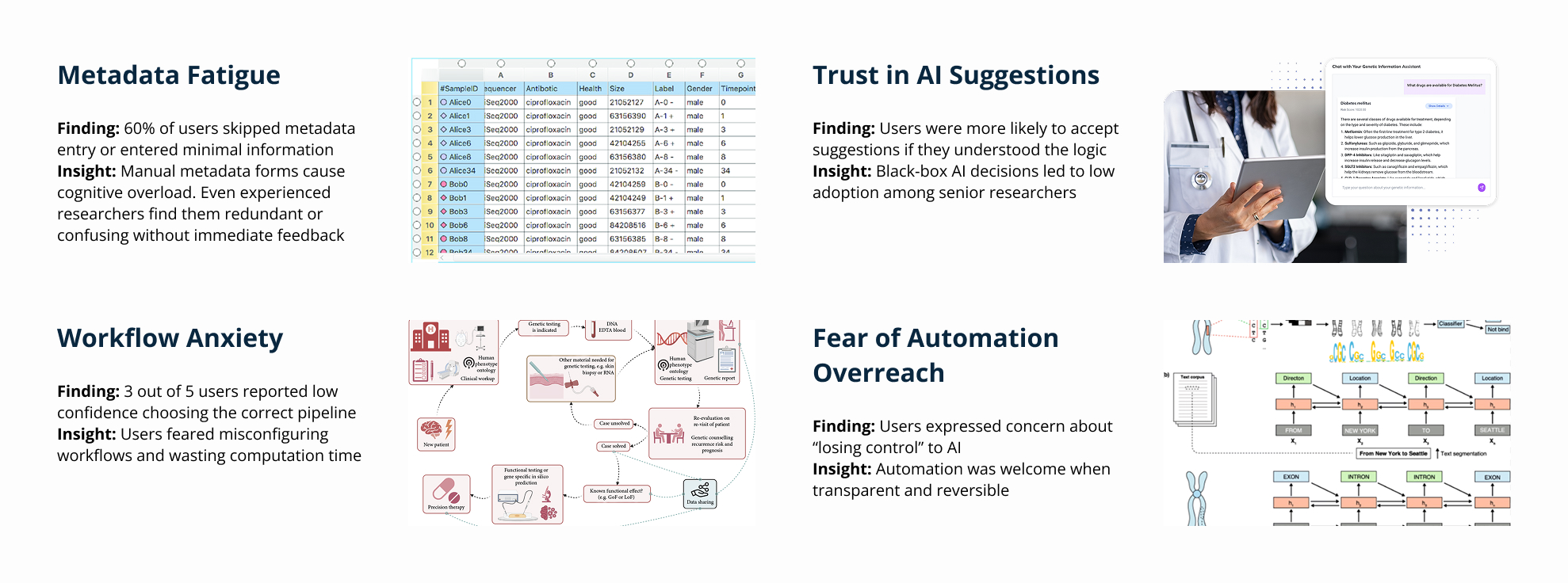

Design
Workflow Redesign from Manual to AI-Augmented
Before
No dynamic suggestions — user must manually:
- Choose sample type
- Select a gene panel from a long, alphabetized list
- Enter parameters (e.g., genome build, quality filters)
- No guidance or automation
- Confusing terminology for non-bioinformaticians
- High cognitive load and decision paralysis


After AI Integration
Replaced form fields with an intelligent assistant interface
Integrated AI-powered recommendations based on:
- Sample content
- Dataset info
- Lab history (frequently used panels)
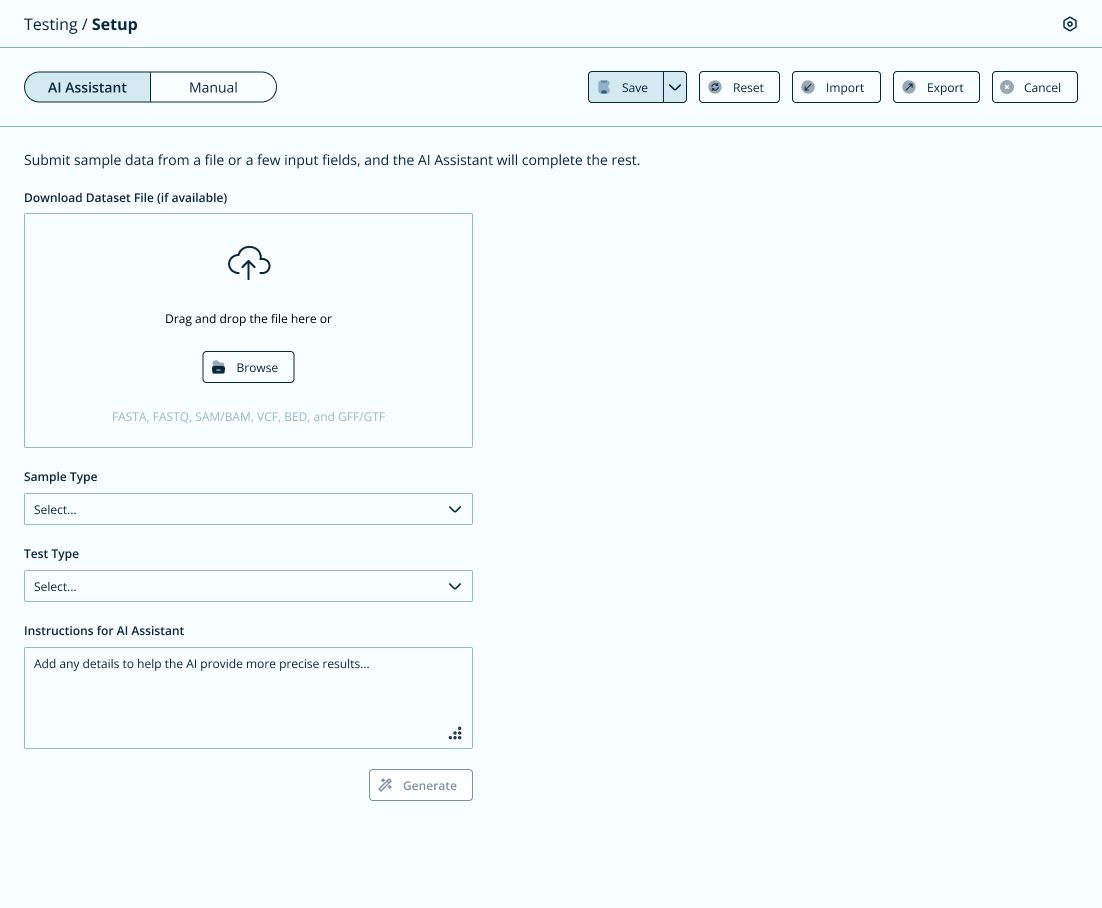

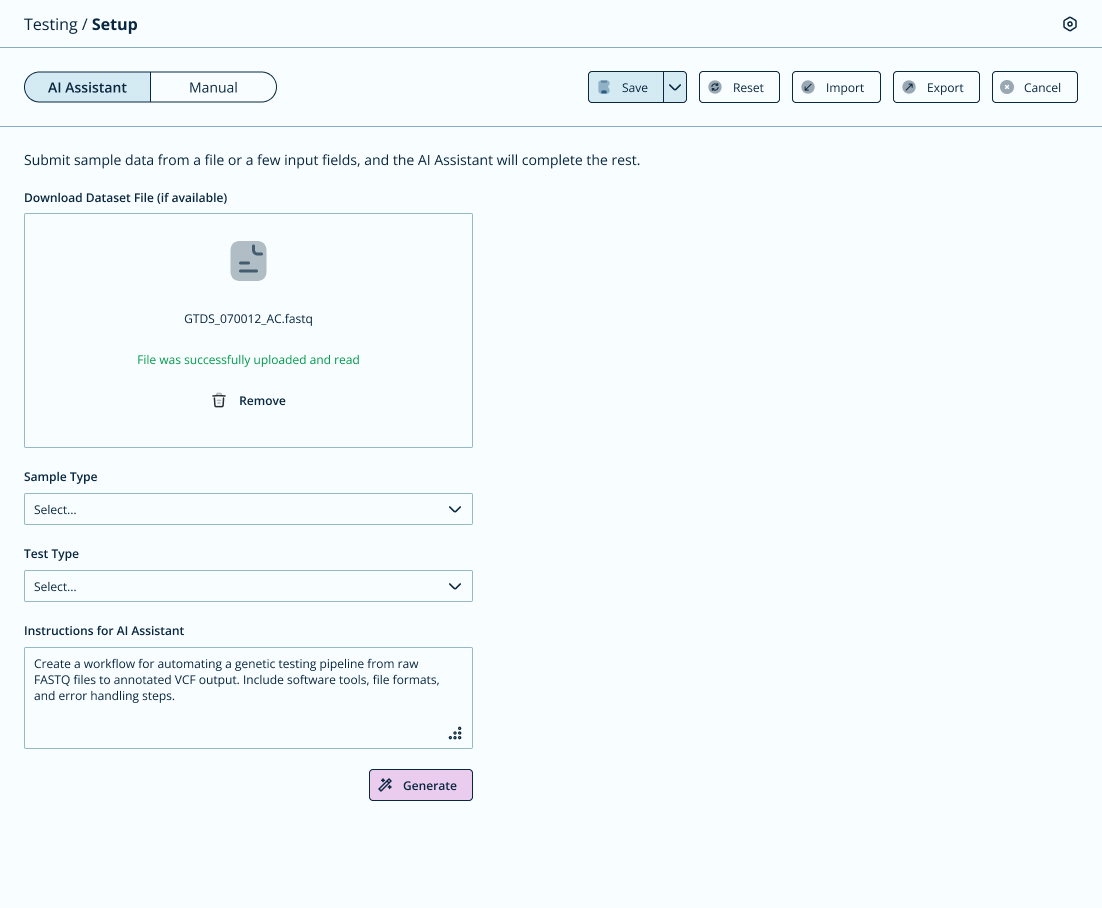

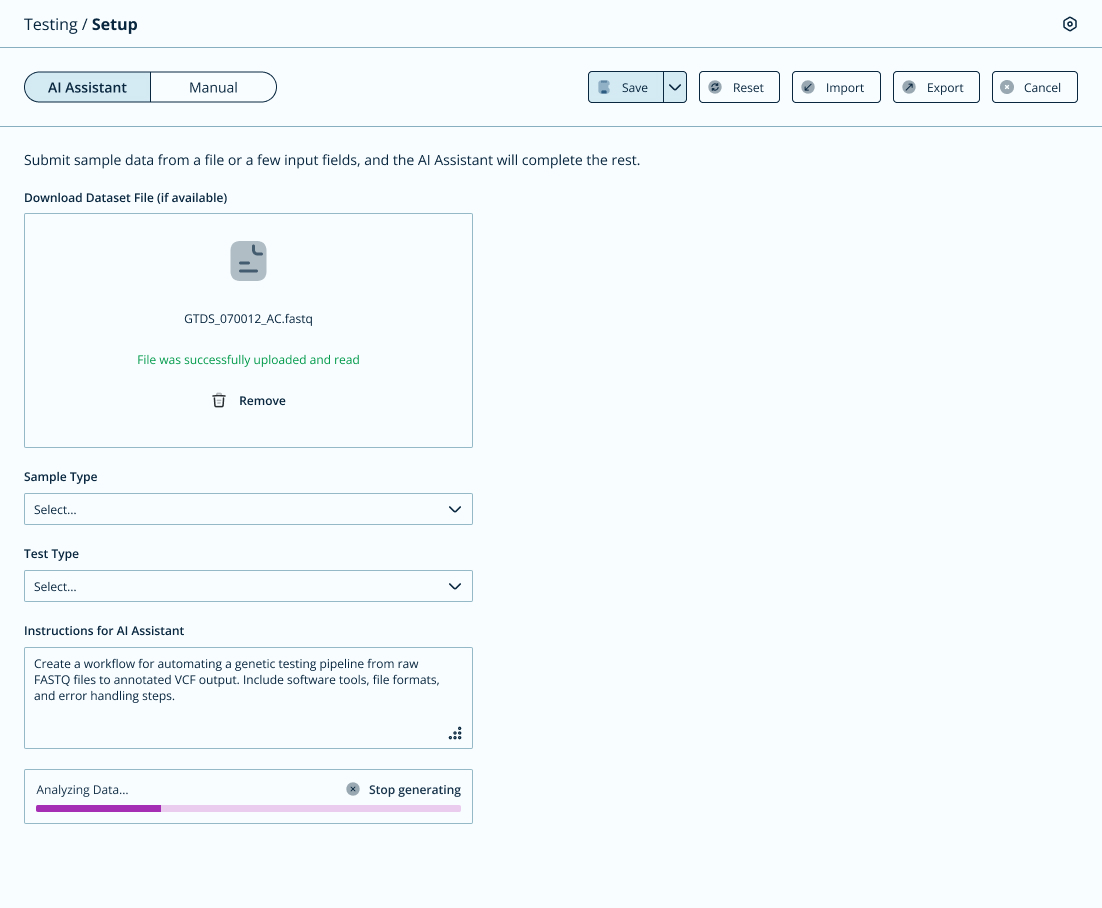

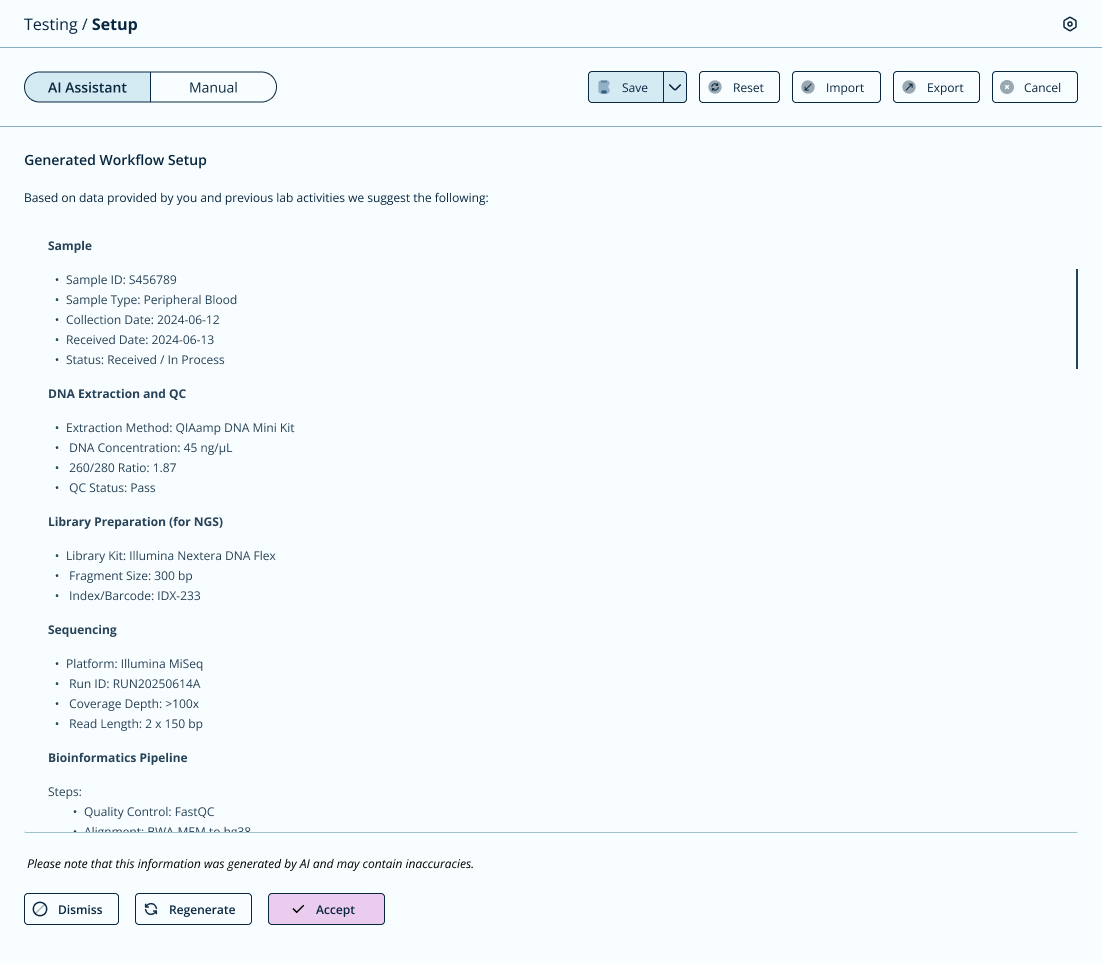

AI Panel Recommendation
Created a panel recommender module embedded in the test setup screen.
Designed:
- A side-panel widget summarizing suggestions (with panel names, scores, rationale)
- “Why This?” modal for explainability
- Interaction patterns for AI generation and user acceptance
Integrated lab history context and patient phenotype filters into logic
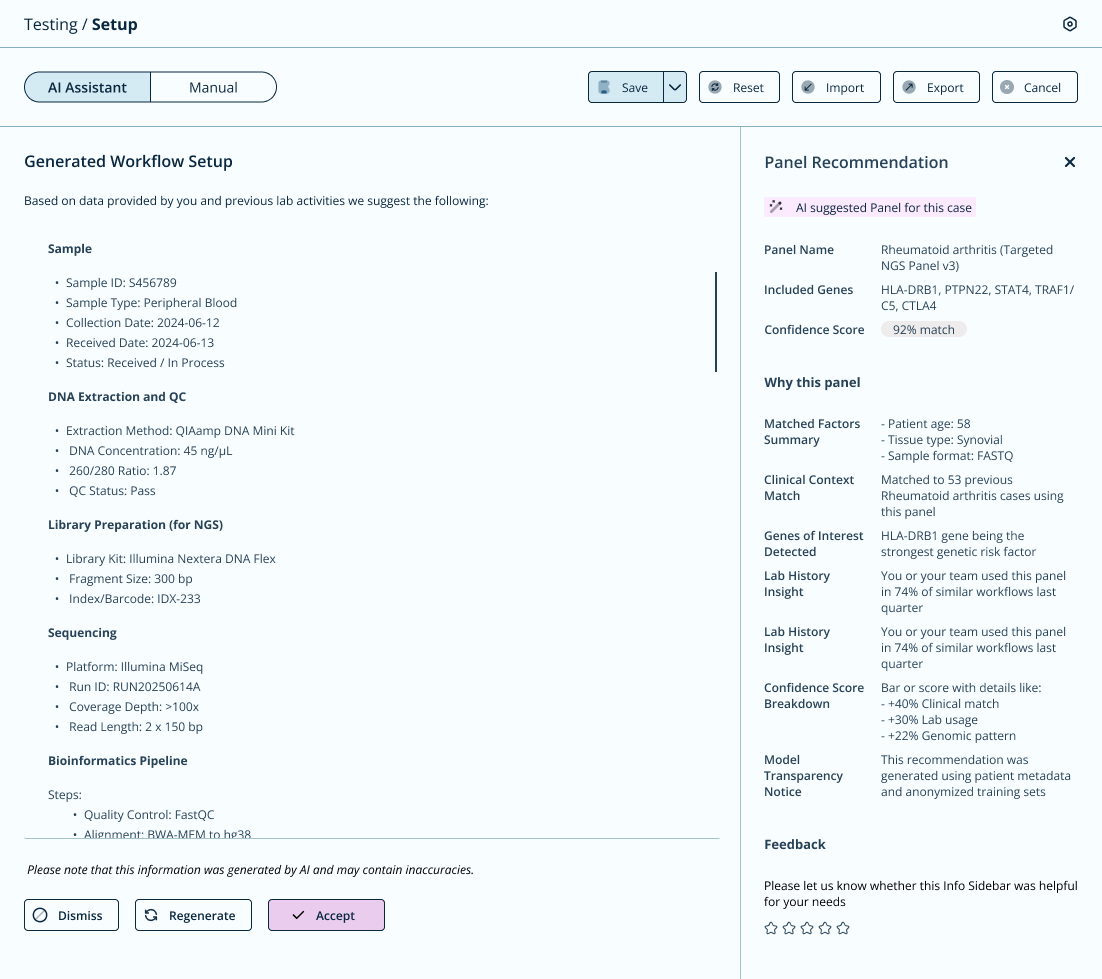

Report Reimagination
Completely rethought the reporting patterns.
- AI interprets VCF, FASTQ and BAM files into clinician-readable insights
- Adds “Likely Pathogenic” flags with link-outs to evidence
- Uses language like: “A BRCA1 mutation has been detected, commonly associated with increased breast cancer risk.”
- Visual gene diagrams + AI-generated summary section
Cohort Intelligence Dashboard
Designed new dashboard for cohort-wide insights:
- Mutation distribution by gene (bubble chart, bar chart)
- Filters: age group, tissue type, phenotype, test type
- Real-time alerts from AI detecting unusual patterns
Key Takeaways
Human-Centered AI Design
Measurable Business Impact
+17% increase in customer retention among clinics and labs
NPS rose from 42 to 71, with usability tests showing a 66% faster interpretation time
Sales teams began using redesigned features as a demo asset, accelerating enterprise deal conversations by showing real-world utility.
Strategic Role of Product Design
Led end-to-end redesign: discovery → design → delivery, collaborating with AI/ML engineers, genetic counselors, and sales teams
Finally:
This project wasn’t about making the UI prettier — it was about reshaping workflows with intelligence, empathy, and clarity. As Lead Product Designer, I connected technical potential with human needs, ensuring that:
Complex AI became intuitive and trustworthy
Results were measurable and aligned with business goals
The product evolved into a strategic differentiator in the competitive landscape
